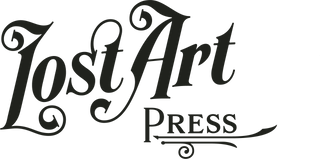Mouldings in Practice
by Matthew Sheldon Bickford
You can download an excerpt from this book here.
After years of publishing woodworking information, you often hear that there is nothing new in the craft. Everything has been done before, written before and fully figured out.
I used to believe that was true until I read the manuscript that was to become “Mouldings in Practice” by Matthew Sheldon Bickford. This book explains how to make mouldings in a simple way that I have never ever encountered – either in print or from an instructor.
The book turns a set of complicated mouldings into a series of predictable rabbets and chamfers that guide your hollow and round planes to make anything – anything – that has been made in the past or that you can envision for your future projects.
We had many proofreaders edit this book and the universal reaction was much like this:
“Well, crap. Now I want to buy some of these stupid planes.”
“Mouldings in Practice” is accessible for even the beginning hand-tool woodworker. It uses more than 200 color illustrations and dozens of photos to explain how to lay out, prepare for and cut any moulding you can draw.
The first half of the book is focused on how to make the tools function, including the tools that help the hollow and round planes – such as the plow and the rabbet. Matt also covers snipes bills and side rounds so you know their role in making mouldings. Once you understand how rabbets and chamfers guide the rounds and chamfers, Matt shows you how to execute the mouldings for eight very sweet Connecticut River Valley period projects using photos and step-by-step illustrations and instruction.
The book has a full index by Suzanne Ellison (the saucy indexer for “The Anarchist’s Tool Chest”), plus appendices on fixing up old moulding planes, building a sticking board and how to capture moulding profiles in the wild.
Like all our books, “Mouldings in Practice” has been produced entirely in the U.S. It has color illustrations with black-and-white photos, and it is printed on #60 white uncoated and acid-free paper. The pages are sewn to last a long time. And the book is hardbound and covered with cotton.
Contents
Preface vii
1: No Compromises 2
2: The Case for Hollows & rounds 8
3: Overture 24
4: Rabbets & Rabbet Planes 38
5: Using Rabbets as Chutes 50
6: Using Rabbets & Chamfers 63
7: Layout 72
8: Snipes-bill Planes 76
9: Side-round Planes 87
10: Work Backward Through Layout 98
11: Make Ovular Shpaes 106
12: Plow Planes 114
13: The Dark Side 118
14: Maintain the Cutting Edge & Body 122
15: Correct Mistakes & 'Cheats' 138
16: Conclusion 146
Appendices
1: Antique Planes 149
2: From Wood to Paper (vs. Paper to Wood) 154
3: The Sticking Board 157
4: Mouldings from 8 Historical Pieces 160
5: Frequently Asked Questions 238
Afterword 240
Acknowledgments 242
Index 244
About the Author

Matt Bickford is a planemaker who sells reproduction 18th-century moulding planes under the name of M.S. Bickford, which he founded in 2010. Matt also teaches how to use wooden moulding planes in classes and at shows across the country. He lives in Haddam Neck, Connecticut.
Read more about Matt in our full profile.






